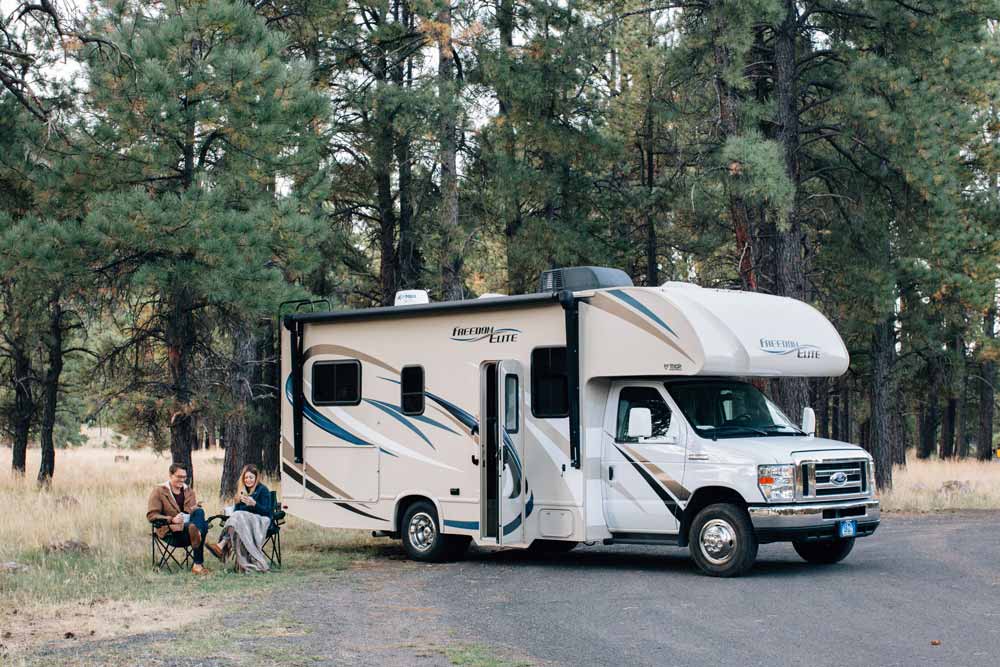For many, a recreational vehicle is an attractive travel option for its convenience and comfort, and even as a more economic alternative to staying in a hotel, especially when travelling with family. For others, an RV also provides a full-time or temporary home.
However, space is limited when travelling in an RV. No matter the size of your RV – whether you own a pop-up camper or a luxury motorhome – you’ll want to get organized and pack efficiently to make the most of your travel time! Here are six storage tips to make the most out of your RV space and get organized before hitting the road.
1. Baskets Are An RV Must-have
Before going basket shopping, make sure to measure all your shelf space, cubbies and any empty space in your RV. Baskets come in many sizes, shapes and materials, so knowing the space you have will make it easier to choose the best baskets for your RV.
Sort your supplies into categorized baskets. For example, you can place your dishes and bowls into one basket, your cups, mugs and straws in another and your cutlery in yet another basket. Besides keeping your place tidy, you’ll be able to bring these items to the table in one trip.
You can make the most of your space by fitting baskets in tight or underused spaces, such as the space above your cupboards. Here you can place items that you don’t need every day, such as toys, board games and other outdoor tools and supplies.
2. Line Your Drawers and Shelves
When getting ready for your trip, we recommend you place liners on all your storage surfaces, including shelves and drawers. This will not only give your surfaces a fresh, clean look, but they will also help prevent spills and will make your life easier during clean-up.
Liners provide an extra anti-slip layer to your surfaces to avoid items sliding and falling while the vehicle is moving. If something falls or breaks, cleaning will be as easy as removing the liner carefully and replacing it with a fresh one. Liners come in many patterns and colours, so you’ll surely find the ones that fit your style!
3. Make The Most of Your Pantry Space
Get your grocery list ready for a shopping trip before your travels. Stock up on staples such as canned goods, dry goods such as nuts and cereal, and, of course, yummy camping snacks!
To maximize your pantry space, place the taller items at the back of your pantry and smaller items in the front. Wired baskets or clear bins are great to store smaller items and bagged items to prevent them from moving around while the RV is in motion. Boxed goods like crackers and snack bars can be stored at the top of your pantry, while heavier items like cans and bottles of water should be placed at the bottom.
4. Customize The Space to Your Needs
When travelling, you won’t have fantastic services like Wi-Fi or cable everywhere, so it’s essential to bring movies for entertainment on a rainy day – especially for the kids! However, bringing DVDs in their cases can quickly stack up and use up valuable space. Instead, you can store your DVDs in a wallet case which can be stored nicely along with some books and magazines.
Having a command centre for the family can help during your trips! You can set it up on the fridge if it’s magnetic. Otherwise, you can use Command strips on a pantry door or wall. Using a whiteboard with magnets or a cork board with thumbtacks will help you keep important information, such as phone numbers, itinerary, addresses and other notes about your trip, while adding a bit of homey décor.
5. Maximize Your Bedroom Space with Labeled Containers
Storage bins and tubs work wonders for the space under your bed. Here, you can store your bedding, linens and blankets, cleaning and bathroom supplies, outdoor tools and gear, and even extra shoes and clothing.
Taking the extra step to label and tag your bins, tubs and baskets will be a time saver. Doing this will help you identify the contents of each storage container and quickly find what you’re looking for. This is especially helpful for clothing if you don’t have a dresser, or if you want some extra space in your closet. Labeling your containers will also make cleanup easier – you won’t have to spend hours figuring out what goes where!
6. Use Self-storage to Organize Your New RV Home
Making the most of your new RV home space can take some time and practice, especially considering the volume and weight limitations. When you’re planning your first few trips, it might be overwhelming to sort out what you need and what you don’t, and sometimes, you’ll need to leave some of your possessions behind. Using self-storage units will ensure your items are safe, while making it easier for you to organize and decide what to take on your next trip.
At U-Lock Mini Storage, we have storage facilities across Greater Vancouver and Vancouver Island. Our facilities include self storage Victoria, self storage Parksville, self storage Nanaimo, self storage Burnaby, self storage White Rock and Surrey, and self storage Chilliwack. Contact us if you have any questions!
Whether you are planning a long-term trip, or a quick getaway, organizing your RV home and maximizing your limited space can be a challenge, but these simple tips will get you off to a good start!


